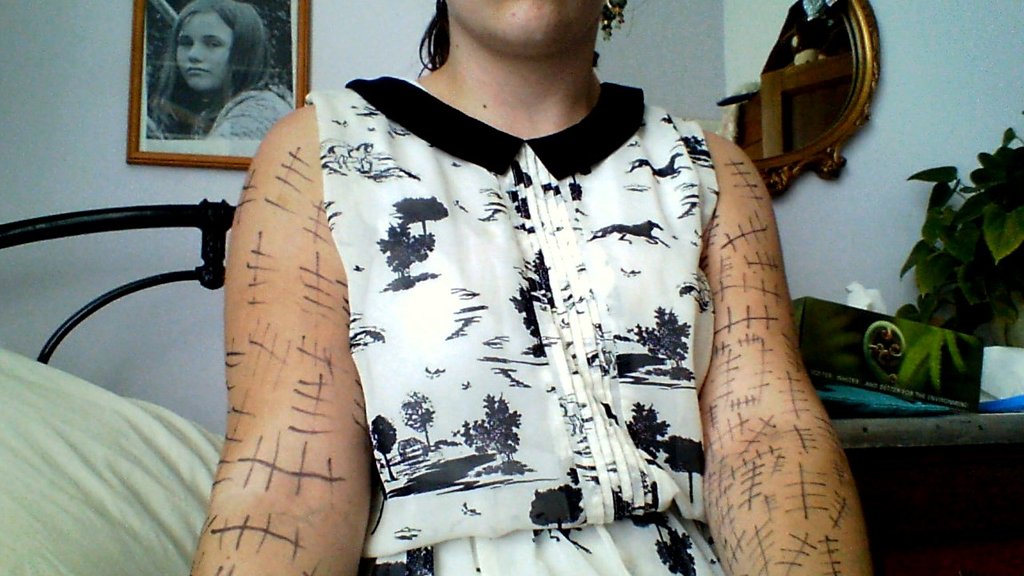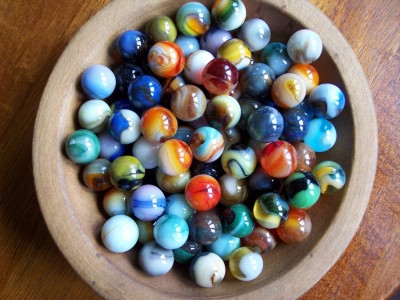
Once upon a time, when I was somewhere in the neighborhood of 10 or 12 years old, it was my job to go with my mom to the laundromat to help do my family’s laundry. I wasn’t a huge fan of this—the nearest laundromat was kind of sketchy, to this day I remain mediocre at folding t-shirts, and there’s just something a little uncomfortable about having to fold your parents’ and brother’s underwear—but there was one thing I really liked about those trips, and that was the 20 minute lull in between when the last load went into a washer and the first load demanded sorting and partial transfer to a dryer. During that downtime, my mom would read her book, and I was free to do whatever I wanted. Invariably, I sat at a little folding station and, sheltered from view by washing machines on three sides, pretended to do my homework while reading from the laundromat’s stack of “trashy” magazines.
With rapt attention and furtive glances over my shoulder, I read ALL the sex tips (in Cosmo and in other such fine publications). I studiously absorbed articles that subtly (and not-so-subtly) encouraged me to feel insecure about body parts and features that I didn’t even have yet. I was also a huge fan of Ladies’ Home Journal’s “Can This Marriage Be Saved,” even though I was already developing opinions that sometimes clashed with those of whoever was doling out advice to unhappy wives.
Somewhere in all that secretive studying was when I first read about (what I think of as) The Marble Thing.
What, you ask, is The Marble Thing? As explained by a woman who wrote in to relay advice she’d gotten from her mother shortly before she’d gotten married, The Marble Thing is this: get a jar and a bunch of marbles, and keep them under the bed. Starting from the night you get married, and for the first year of marriage, put a marble in the jar every time you have sex. (What counts as one marble’s worth of “sex” was apparently so self-evident as not to merit addressing.) After your first anniversary, start removing a marble from the jar every time you have sex—and see how long it takes you to empty the jar. The woman who wrote in said it took her and her husband about four years, though she didn’t mention whether her husband knew about the marbles or not.
Even as a kid, I wasn’t quite sure how to feel about this marble business.

I bring this up to make the point that tracking one’s sex life is not new. On some level, we know this already: reference, for example, the (usually figurative) expression about “notches on a bedpost.” And especially when we were younger and first sexually active, most of us knew exactly how many partners we’d had (it’s a prerequisite for fretting about having slept with “too many” or “not enough” people, after all). I reference The Marble Thing, however, to show that it’s not just informal tracking that’s been around for a long, indeterminate while; it’s formal, quantitative tracking, too.
From my perspective—as someone who studies self-tracking, and who has known about sex tracking (like The Marble Thing) probably longer than I should have—it was only a matter of time before sex-tracking apps started turning up somewhere inside my field of attention. (If nothing else, I know the life-hacking crowd talks about “sex hacking,” and they tend to be a pretty tech-savvy bunch.) Today “sooner or later” became sooner, as the magical network that is Twitter pointed me at a sex-tracking app called Spreadsheets.
Spreadsheets. (Let’s all pause to think about that name, *facepalm* a little, and move on.)
There’s a whole lot to say about this app, and I’ll probably write about it again in a few weeks when I’m not half-packed for #ASA13 and theoretically leaving in about an hour. But for now, there’s two main points I want to make:
First, we need to ask some big questions about the cultural and political implications of both this app’s design and its very existence. What messages is this app sending about which types of activity do and don’t count as “sex,” and about what the meanings of sex are, and about what’s most important during sex? How is the design of this app reinforcing which conceptualizations of and attitudes about sex, and to what effect (and for whom)? What are the lessons it’s teaching about masculine and feminine sexuality, and how would queer sexualities fit into its structuring? What does it mean to distill sexual activity down to “how many thrusts per minute you’re averaging, how long you go for, and exactly how loud it gets”? What does it mean to encourage users to “monitor” their sexual activity, to view sex as an “accomplishment” or an “achievement,” to compare their sex lives to other people’s sex lives (“Share [your data] with your friends and let the facts speak for themselves”), and to seek “feedback” from an app rather than talking to their partners?
As Jenny (@Jenny_L_Davis) argues in her analysis of the kink-oriented social networking site Fetlife, the way a platform is designed and structured can influence how we come to see others and ourselves as sexual beings, as well as how we think about sex itself. While I’m not usually a fan of the line of reasoning that goes, “OMG, now people will look to an app for feedback instead of asking other people or relying on their own intuition, surely it is the end of the world,” I do think this case is a little different. I used to volunteer answering questions and giving advice on online safer-sex information bulletin boards, and I frankly think it’s somewhere between “a tragedy” and “psychological violence” how little we (in the U.S.) teach people about how to talk about sex. The promotional video on the Spreadsheets website, for instance, tells the story of a woman who is frustrated trying to get her male partner into bed. She tries leaving her clothes all over the stairs; she tries wearing short shorts and bending over in the kitchen; nothing works. Since clearly she can’t use words to express her desire, or to directly initiate sex herself (especially as a woman!), she remains frustrated—until the excitement of tracking with Spreadsheets is finally enough to get her partner’s attention and lure him into bed. Perhaps this is Spreadsheets’ way of arguing that the app could be “a conversation starter,” but I honestly don’t think it will structure the kinds of conversations about sex that our culture (and each of us as individuals) needs to be having. “Monitoring” decibel levels, for example, is not the same thing as knowing about, and seeking, enthusiastic consent.
Frankly, what that decibel thing most reminds me of is this (really great) song by the band Lush, which features the lyric, “When he’s nice to me, he’s just nice to himself / And he’s watching his reflection / I’m a five-foot mirror for adoring himself / Here’s seven years bad luck.” Is hitting an all-time loudness record really about trying to make one’s partner feel happy and fulfilled, or is it more about stroking (har, har) one’s own ego? I’ll grant that there’s an extent to which all sex (like all of life) is performative—in fact, I passed most of a bus ride to NYC last spring SMS-discussing with Nathan (@nathanjurgenson) the idea all sex is now porn (following this Twitter thread)—but how does focusing on one’s “performance” in this way intensify those elements of sexual activity? The Spreadsheets website states that “your partner will support your commitment to improving sexual activity through performance tracking,” but I’m not certain how they can be so sure.
Needless to say, the app is also rooted in—and seriously reinforcing—the heteronormative, patriarchal idea that sex=penetration with a penis, period stop. While any combination of people having penetrative sex could ostensibly use this app, regardless of their genders or of what they’re using to penetrate whom, the cultural paradigms that undergird the Spreadsheets designers’ choice of metrics aren’t rooted in GLBTQ sexual activity or in non-heteronormative straight sexual activity. If you doubt me on this one, and don’t feel like reviewing Gender Studies 101, try this: go to the Spreadsheets website and find an image of hypothetical users that doesn’t feature a two-person couple, and that isn’t a cisgender straight couple. I’ll wait. Wait, no I won’t.
Finally, the second issue I want to raise is a running theme of discussions within the Quantified Self community, which is where exactly “self” stops and “other” begins with respect to self-tracking. The Spreadsheets website does encourage users to inform their partners that their shared sex is being tracked, but what happens when one partner is into tracking and the other isn’t? (How is that similar to, and different from, when partners have discordant kink interests?) Ultimately, I can’t say it any better than Jay (@thejaymo) did on Twitter this morning: “at what point does MY QS data become surveillance of YOU”?
What do you think?

Comments 3
Nick Carr — August 11, 2013
"but what happens when one partner is into tracking and the other isn’t?"
In that situation, I would suggest going back to the marbles-in-the-jar technique. It's an elegant solution, and it has the added attraction of using a data repository that is absolutely invisible to spy agencies and other busybodies.
The Introvert Fetish » Cyborgology — August 30, 2013
[...] awkward, shy, 13-year-old girls; we were not, by any stretch of the imagination, “popular.” Surreptitiously read women’s magazines had taught us to seek self-knowledge through multiple-choice questions, while standardized tests [...]
My TEDxBergen talk: What Can’t We Measure in a Quantified World? | jill/txt — November 12, 2014
[…] we can and cannot measure, using some of my own logs as well as looking at examples of apps like Spreadsheets and thinking about the relationship between quantified personal data and reality. Here’s the […]